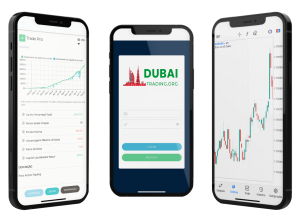Trading Academy
Master the markets with confidence. Whether you’re just starting out or looking to refine your strategies, our educational hub has everything you need.

Beginner Level
1. What is Forex?
Forex is the global marketplace where currencies are exchanged. It operates 24/5 and has a daily trading volume of over $6 trillion.
2. How Does Forex Trading Work?
You buy one currency while selling another. If the value of the currency you bought goes up, you profit.
3. Understanding Currency Pairs
A pair shows two currencies. The first one is the base, the second is the quote. Example: EUR/USD = 1.10 means 1 Euro = 1.10 USD.
4. Common Market Terms You Must Know
Pip: Price movement unit (e.g. 1 pip = 0.0001)
Lot: The size of your trade
Margin: The amount you need to open a position
Stop Loss / Take Profit: Tools to manage risk
5. How to Open a Trade (Step-by-Step)
Choose a currency pair
Decide how much to invest (lot size)
Set Stop Loss & Take Profit
Click “Buy” or “Sell”
Track your trade
Intermediate Level – Dive Deeper into Strategy
1. Technical vs Fundamental Analysis
Technical analysis uses charts, indicators, and past price data.
Fundamental analysis focuses on news, economy, interest rates, and geopolitical events.
2. Popular Indicators & How to Use Them
RSI: Measures overbought or oversold conditions.
MACD: Shows momentum and trend reversals.
Bollinger Bands: Show price volatility and possible reversal zones.
3. Reading Candlestick Patterns
Candlestick charts show open, high, low, and close prices. Patterns like Doji, Hammer, and Engulfing can signal market reversals.
4. Chart Patterns You Should Recognize
Head and Shoulders: Reversal pattern.
Double Top / Bottom: Market turning point.
Triangles, Flags: Continuation patterns.
5. How to Build a Strategy
Define entry and exit rules
Decide when NOT to trade
Backtest your system
Stick to your plan
Advanced Level – Trade Like a Pro
1. Scalping, Day Trading & Swing Trading
Scalping: Dozens of quick trades, small profits
Day Trading: Enter & exit within the same day
Swing Trading: Hold trades for days to catch larger moves.
2. Backtesting Strategies
Use past data to simulate how your strategy would have performed. Tools: TradingView, MetaTrader.
3. Volatility & News Trading
Trade during high-impact news like interest rate decisions, NFP, inflation reports. Fast but risky.
4. Advanced Risk Management
Use dynamic position sizing
Allocate capital across assets
Hedge to reduce exposure
5. Trading Psychology & Discipline
Set routine, trade like a job
Master boredom, avoid overtrading
Accept loss as part of the game
